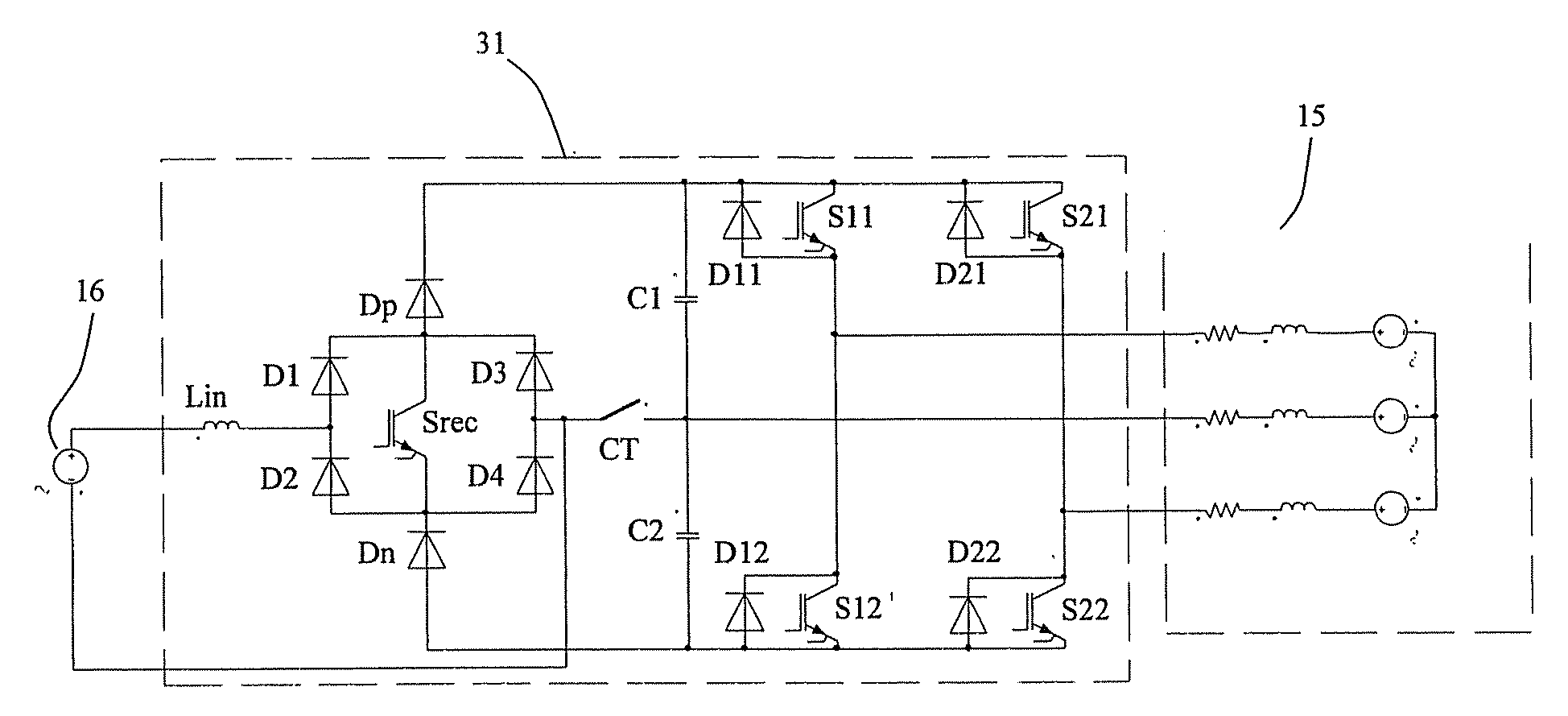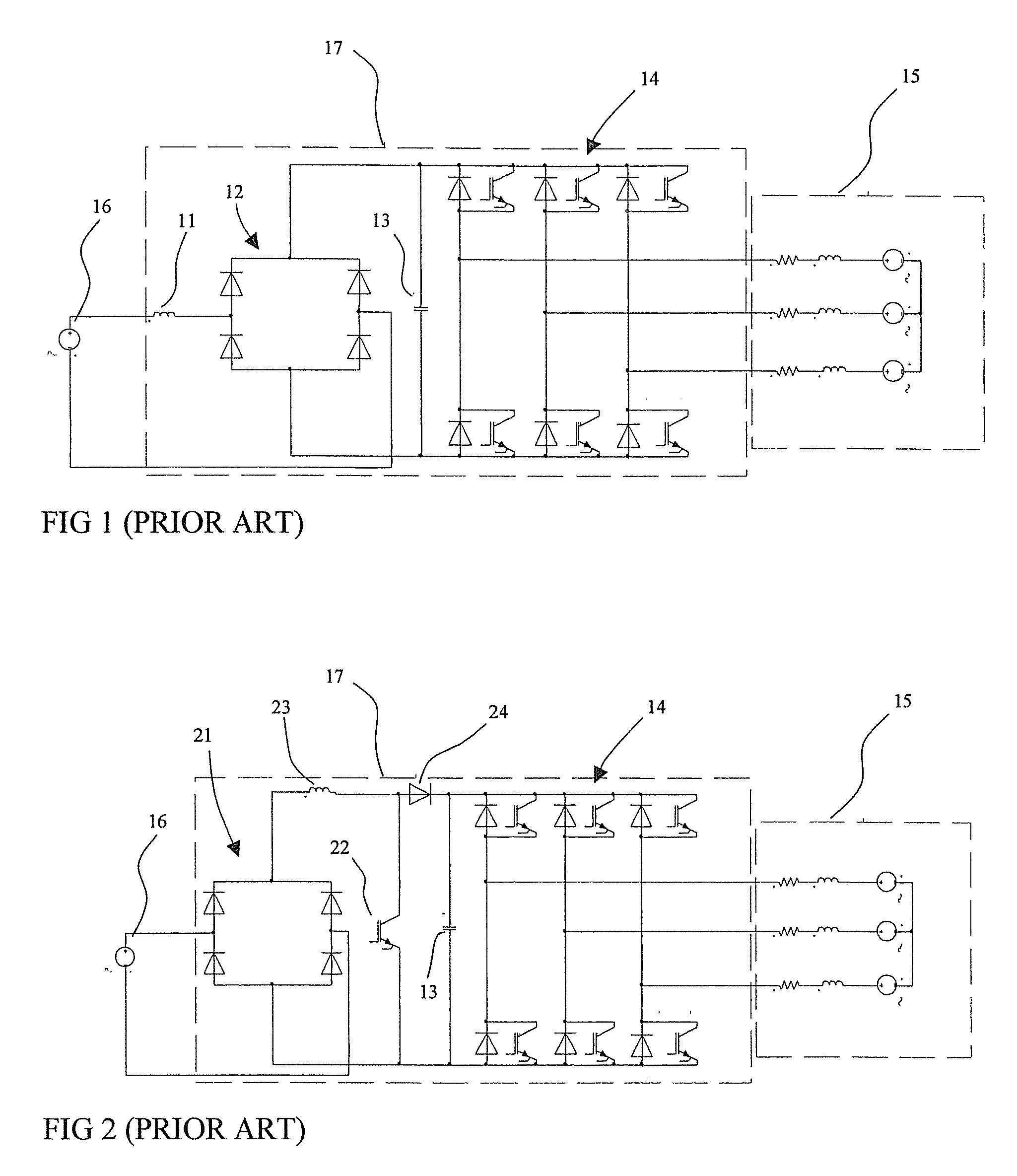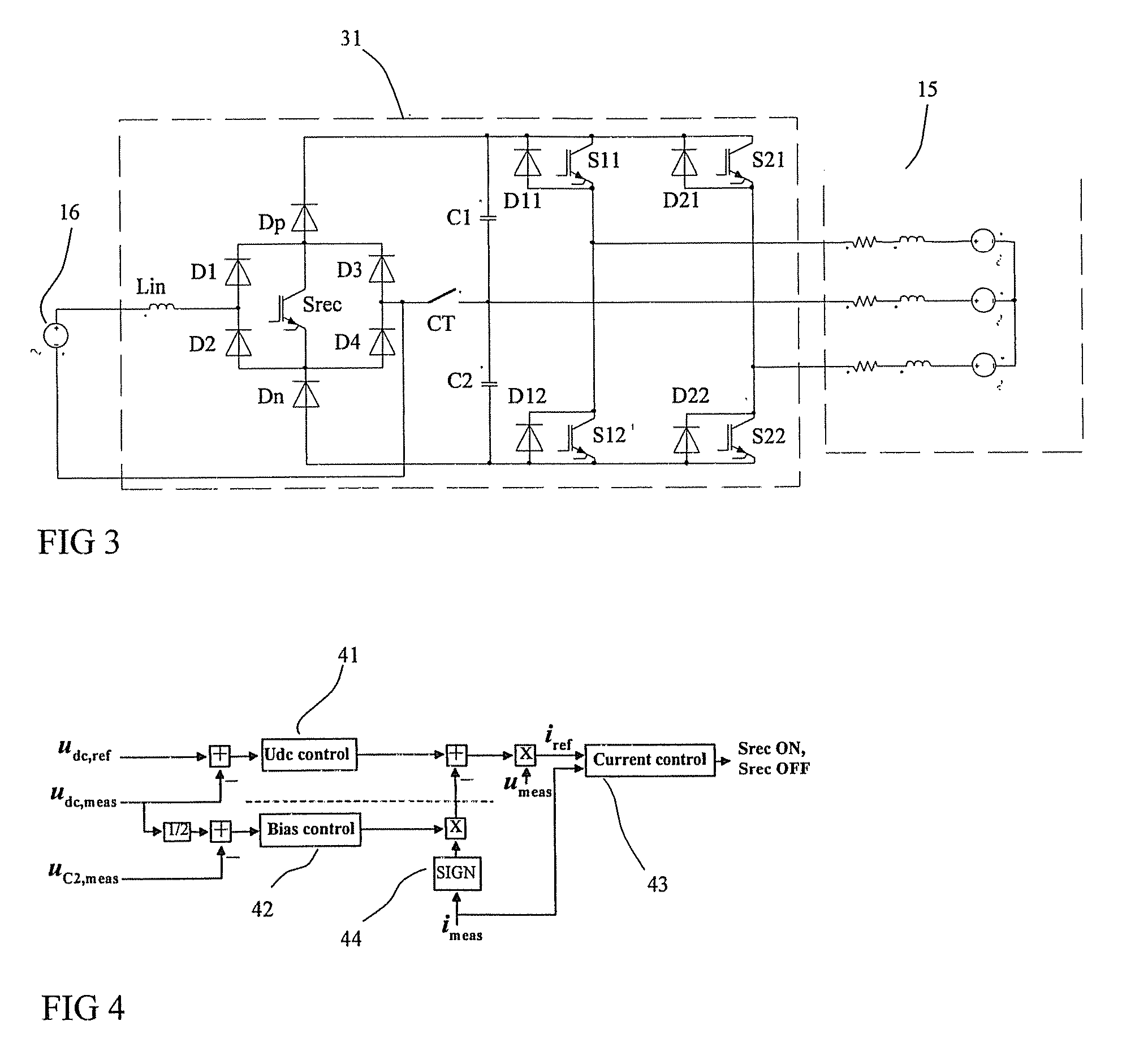Single-phase to three-phase converter
a converter and single-phase technology, applied in the direction of power conversion systems, ac-ac conversion, electrical apparatus, etc., can solve the problems of reducing the total manufacturing cost of the converter, and reducing the overall manufacturing cos
- Summary
- Abstract
- Description
- Claims
- Application Information
AI Technical Summary
Benefits of technology
Problems solved by technology
Method used
Image
Examples
Embodiment Construction
[0022]FIG. 3 shows the structure of a single-phase to three-phase converter 31 according to the present invention. In this structure the rectifier stage is formed of a diode bridge D1, D2, D3, D4 having an input and an output. The input of the diode bridge is formed between diodes D1, D2 and diodes D3, D4, and the output is formed between diodes D1, D3 and diodes D2, D4. An inductor Lin is connected to the positive input of the diode bridge.
[0023]A controllable switch Srec is connected between the output terminals of the diode bridge, and a blocking diode Dp is connected to the positive output of the diode bridge between said positive output and the positive rail of a DC link. Similarly another blocking diode is connected between the negative output of the diode bridge and the negative rail of the DC link. The polarities of the blocking diodes are such that a current can flow from the positive output of the diode bridge to the positive rail of the DC link and from the negative rail ...
PUM
 Login to View More
Login to View More Abstract
Description
Claims
Application Information
 Login to View More
Login to View More - R&D
- Intellectual Property
- Life Sciences
- Materials
- Tech Scout
- Unparalleled Data Quality
- Higher Quality Content
- 60% Fewer Hallucinations
Browse by: Latest US Patents, China's latest patents, Technical Efficacy Thesaurus, Application Domain, Technology Topic, Popular Technical Reports.
© 2025 PatSnap. All rights reserved.Legal|Privacy policy|Modern Slavery Act Transparency Statement|Sitemap|About US| Contact US: help@patsnap.com



